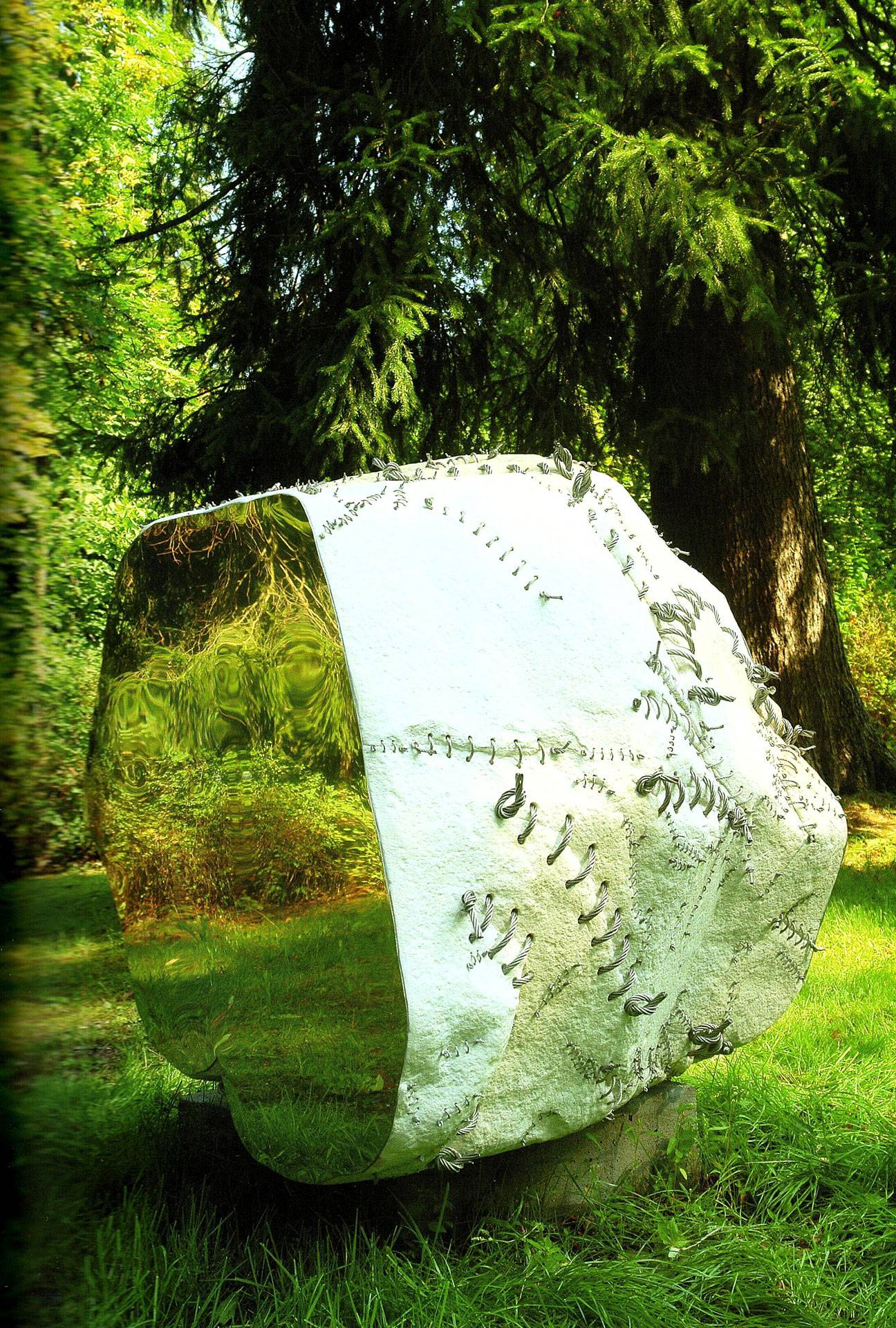Michael Kos
"BEAUTY AND THE BEAST"
was born in Villach in 1963. Studied at the University of Applied Arts with Peter Weibel.
Michael Kos has been a member of the [kunstwerk] krastal association since 2001 and, together with Sibylle van Halem and Max Seibald, was the chairman of the international sculpture symposium WORLD POOL in the Krastal Valley in 2007. Prose collection HERZVERSAGEN (2000), poetry collection FASANENSICHEL (2002). Publication of literary works published by Literaturedition Niederösterreich. Publication of DINGE AN SICH - an art book for the Kant Year together with Egon Straszer as well as the work catalogue WIEDERGUTMACHUNGEN, 2005.
Numerous group exhibitions as well as solo exhibitions in Austria and abroad. Lives as a freelance artist in Vienna, Lower Austria and in the Krastal Valley/Carinthia.Biographie
"BEAUTY AND THE BEAST" | stainless steel-wire, mirrors | 2007
As a counterpoint to his usual selection criteria, which are based on the integrity of the stone, the sculptor Michael Kos deliberately makes boulders with scars the subject of his sculptures here.
The work for Zell am See follows on from the series of works entitled "Vernähungen" (Seams), in which the conceptual idea of the illusory seam feels its way directly into the material. By working on the cracked boulders, Kos explicitly addresses the complex question of wholeness, perfection, damage and a possible restoration. The artistic intervention here becomes a repair, an ideal attempt at reparation, the creation of wholeness. To then break this wholeness once again is part of a formal development within the series of works and characterises the sculpture for Thumersbach. By radically trimming the stone on both sides, the shape of the entire boulder can only be traced in fragments. The use of industrial materials creates a formal tension between technoid artificiality and the natural amorphous form of the stone.
Using stainless steel seams and reflections, Michael Kos creates "emotional surfaces" on the stone, which communicate with the viewer in a postmodern design and reflect both his or her sentiments as well as the surrounding area.
